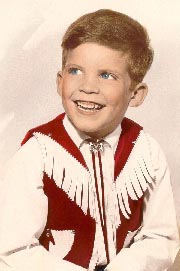A check-in on the Banjo versus TV project — J.R.'s ongoing plan to spend more time on his banjo than on TV. This post covers 3/28/2010 through 4/3/2010.

It's been another week of reviewing my recordings of Midwest Banjo Camp sessions. Here's what I learned:
- From Danny Barnes "Bluegrass Mentor" session:
- Pat Cloud says there's no such thing as rolls.
- Ned Luberecki has a great 20 second banjo lesson that I should ask him for when I see him this year.
- From Peter Knupfer, James McKinney, Mike Sumner, Pete Wernick: "Tips on Constructing Breaks" session:
- This is one of my favorite sessions to listen to because the various teachers (especially Pete Wernick and James McKinney) discuss their differences on some topics.
- Learning from tablature
- Peter Wernick says he tells students who are just getting started to learn two breaks from tablature, but then to stop learning from tablature and to begin doing your own breaks.
Wernick likens learning a lot of breaks from tablature to learning to "speak Chinese" by phonetically memorizing a lot of Chinese poems — you're left with great parroting skills but are unable to order food or to find a bathroom in China. - James McKinney says that one should pursue multiple learning paths in parallel. It's good to continue to learn breaks from tablature as long as you're also training your ear and working on your break skills. Also, two songs probably isn't enough for someone to gain enough vocabulary.
McKinney counters Wernick by actually speaking in Mandarin and explaining that you're only going to learn a language well if you listen to it and pay close attention to the way people use it. - Sumner falls somewhere in the middle, suggesting that there is a point in everyone's learning where it's appropriate to learn others' breaks in detail and to incorporate it into one's own skillset. He says the timing of this period varies with individual learning style.
- Peter Wernick says he tells students who are just getting started to learn two breaks from tablature, but then to stop learning from tablature and to begin doing your own breaks.
- Essential bluegrass songs
- McKinney says that Don Reno, Earl Scruggs and Ralph Stanley are the founding fathers of bluegrass banjo. He lists some of their songs that the beginning bluegrass banjo player must listen to over and over.
- Cripple Creek
- Foggy Mountain Breakdown
- Groundspeed
- Home Sweet Home
- Lonesome Reuben (in D tuning),
- Shuckin' the Corn
- Ballad of Jed Clampett
- Double Banjo Blues
- Follow the Leader
- Remington Ride
- Missile Ride
- Charlotte Breakdown
- Various fiddle tunes like Sally Goodin
- Wernick disagrees with the high percentage of instrumentals on McKinney's list. He says that bluegrass music is mostly songs: voices plus instruments. Instrumentals are banned during the day at Wernick's banjo camps.
Wernick's essential song list is his list of 74 Two-Chord Songs and Favorite Songs That Use 2 Or 3 Chords.
- McKinney says that Don Reno, Earl Scruggs and Ralph Stanley are the founding fathers of bluegrass banjo. He lists some of their songs that the beginning bluegrass banjo player must listen to over and over.
- Learning from tablature
- Pete Wernick has a couple of theories about the banjo and male or female voices.
- He says the banjo must have been invented by men because the middle of the male singing range is conveniently placed on the G3 third string while the middle of the female singing range is inconveniently located on the D4 first string.
- He also thinks that this is why women tend to play clawhammer. The clawhammer style emphasizes the use of the first string.
- James McKinney recommends This Is Your Brain on Music: The Science of a Human Obsession.
- James McKinney describes two approaches to banjo breaks.
- The modular approach: Stringing together licks that match the chord progression with less (sometimes no) regard for playing the melody notes.
- The melody approach: Playing (most of) the melody and fitting in licks around it.
- This is one of my favorite sessions to listen to because the various teachers (especially Pete Wernick and James McKinney) discuss their differences on some topics.
Also in the last week:
- I went to First Friday at Old Town School of Folk Music and played along with the Gather-All and the song circle.
We played some good songs, including...:- Pay Me My Money Down. It's a two-chord song with a great history, but what makes it really good for beginners is the chord change. Every time the word "money" appears in the lyrics, it's time for a chord change.
Here's The Boss to show us how it's done. - Hotel California.
- Ob-La-Di, Ob-La-Da. Three chords. Pop. Everybody knows it. Nothin' better.

...so much that I was able to use it in nearly every song! Yay me! - Pay Me My Money Down. It's a two-chord song with a great history, but what makes it really good for beginners is the chord change. Every time the word "money" appears in the lyrics, it's time for a chord change.
- I ordered up Wernick's new 2-DVD set: Make Up Your Own Banjo Solos.

I assume it will contain a lot of the stuff he discussed at Midwest Banjo Camp.
Cross-posted at J.R.'s Banjo Hangout blog


No comments:
Post a Comment